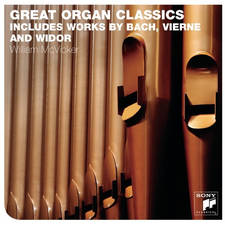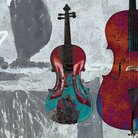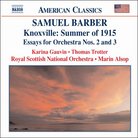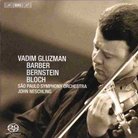Barber - Violin Concerto: Full Works Concert highlight of the week
An unplayable finale and a meddling violin teacher? Jane Jones sheds light on the story behind Barber's only Violin Concerto.
The American composer Samuel Barber was – depending on who you talk to – either one of the most talented lyrical composers of his generation, or one of the most anachronistic and old fashioned in the 20th century, deaf to the latest ideas and musical trends. As for his only Violin Concerto, that too seemed to divide opinions. For the young virtuoso violinist for whom it was written it was initially too dull, but then ultimately unplayable! Or at least, that’s what we’ve always been led to believe. Now there's a newer version of events surrounding the Violin Concerto – and a new character in the story. This is the tale of a commission intended as a vanity project, disrupted by events in Europe and then hijacked by a violin teacher, who saw his big chance to make a name for himself.
Samuel Barber attended the newly opened Curtis Institute of Music in Philadelphia in the 1920s where he met the young violinist Iso Briselli, who'd just moved to the States to study and was being sponsored in the US by a wealthy industrialist Samuel S.Fels and his wife Jennie. Briselli had made an immediate impact on his arrival when at the age of 14, he made his debut with the Philhadelphia Orchestra playing Paganini’s first Violin Concerto, and from that point his career as a virtuoso took off, praised for his superb technique, musicianship and virtuosity.
Barber's career after graduation was equally successful, with some highly acclaimed early works including choral pieces and chamber works, notably the String Quartet with its beautiful second movement adagio – now, a hit in its own right. Barber's poetic lyricism and romantic roots had already set him on a separate path to music’s modernisers, but his musical independence was certainly no barrier to success. As a fellow Philadelphian, and student friend, Barber was the recommended choice of composer when Fels decided that his young Russian born charge, Briselli, was ready for a showpiece which would cement his reputation.
Barber, Briselli and the Fels got together in May 1939, and negotiations were opened on the new work, including the duration, number of movements and crucially, the fee and exclusivity rights for Briselli. Barber asked for $1,000, but Fels said that for that amount of money the work should be longer than they’d originally discussed, and it was agreed that Barber would come up with a three movement work which would be ready by October 1939 for Briselli to play the premier with the Philadelphia Orchestra in January, 1940 and to retain exclusive performance rights for a year after that. Barber received half his fee in advance, and went to Switzerland in the summer of '39 to start work. But the outbreak of war intervened, and as Americans were being urged to leave Europe, Barber planned his journey back to Philadelphia. His original boat trip was cancelled, and he eventually arrived back home later than expected, leaving only a matter of weeks before the Concerto was due to be sent to Briselli so he’d have ample time to learn the work before the January premiere. Barber went to work on his composition at the family lodge on Lake Pocono, and by mid October, the first two movements were with Briselli.
This is where the old version of events differs from what we now know happened, thanks to new correspondence which has been unearthed between Fels, Barber and Briselli’s violin teacher and career coach, Albert Meiff. The usual story goes that Briselli thought the first two movements weren’t virtuosic enough, and he rejected as too easy, requesting that the outstanding finale be altogether more ’brilliant’. When the finale was submitted, it was apparently condemned as unplayable! Now we know this is a convenient shorthand for a much more convoluted series of conversations, views and opinions. It now appears that Briselli did actually like the first two movements when he received them, although he did encourage Barber to consider a more virtuosic finale. It's the violin teacher Albert Meiff who tore into the new composition, declaring Barber’s work as 'far from the requirements of a modern violinist' and requiring 'surgical operation; by 'a specialist'. Further, Meiff believed it would damage Briselli’s reputation and future career if the violinist went ahead with the performance, and that Meiff should re-write the violin part. He also suggested that he should be the one to advise Barber on the final movement. By the time Barber produced the finale in late November, Meiff seems to have successfully undermined the composer in the minds of both Briselli and Fels. Questions remain about what the violin teacher hoped to gain by his outrageous critical assertions, other than asserting greater influence and a more influential management role. Maybe he saw himself as a latter day Joachim, the virtuoso who’d influenced Brahms, but his suggestions of a re-write were never even considered by Barber.
The outcome of Meiff’s meddling isn't in dispute. You could say Meiff got his way as Briselli did not play the premiere as planned in January 1940, but Barber stood by the original deal with Fels and did not offer the Violin Concerto to another violinist until Briselli’s exclusivity clause had expired. For his part, Fels did not ask for the $500 advance to be repaid, whilst Barber and Briselli continued to remain friends for the remainder of their lives. As for Albert Meiff, his name is forgotten, except on those occasions when historians and music lovers want to put the record straight.









